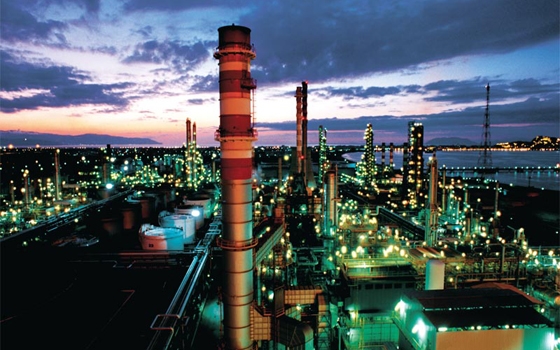The downstream industry in Saudi Arabia is set to receive a boost as nearly US$28 billion worth of petrochemicals plants come online this year, creating thousands of jobs and diversifying income away from oil, Saudi officials said.
The state-owned Saudi Aramco’s efforts are part of a government strategy to turn the spotlight on petrochemicals production as it invests more than $100bn over the next decade in the downstream sector.
Sadara Chemical, a $19.3bn joint venture between Saudi Aramco and Dow Chemical of the US, is more than 80 per cent complete and is expected to start production in the second half of this year and reach full capacity in 2016, said Ziad Al Labban, the company’s chief executive, at a plastics conference in Dubai.
The Sadara project, which will produce 3 million tonnes of petrochemicals a year, is the world’s largest petrochemicals facility to be built in a single phase. It is also the first in the Middle East to use refinery liquids, such as naphtha, as feedstock.
The plant will also use mixed feedstock of ethane gas and liquids, unlike other plants in the region which rely on ethane to produce petrochemicals.
Production from naphtha allows for a greater variety of products. Saudi Refining and Petrochemical (PetroRabigh), a joint venture between Saudi Aramco and Japan’s Sumitomo Chemical, will start production in December from the $8.5bn plant expansion known as PetroRabigh II.
It is expected to reach full capacity in the first quarter of 2016, Abdullah Al Suwailem, the company’s chief executive, said at the same conference.
“Initially a good amount of products will be going out for export for the simple reason we are introducing new speciality chemicals and petrochemicals,” said Sadara’s Mr Al Labban. “As a result we have to develop the customer base within the kingdom of Saudi Arabia as well as the region, and that will take time. During that tenor we will be exporting, but the intent is to grow the demand for our products within the kingdom and other GCC members.”
The new products from Sadara that will be introduced to the regional market include Isocyanates, which are key ingredients used to make polyurethane rigid foams and other speciality applications.
The output from Sadara will also find use in producing automotive parts, medical equipment, healthcare products and building materials.
This is part of the kingdom’s plans to attract local and international investors to build industries and create jobs in the downstream sector.
PetroRabigh’s focus meanwhile has been on the domestic sector, particularly downstream as it stopped exports in December 2013. “It also presents an opportunity for us to contribute to the employment,” said Mr Al Suwailem. “We need to ensure our industrial sustainability by going and integrating into the downstream and not continue exporting … And last but not least, it will be an opportunity to diversify more away from oil.”
Prices of petrochemicals, however, have been hard hit by the near halving of oil prices. Brent last year slid 48 per cent to around $57 a barrel because of an oil supply glut, weaker demand in Asia and Europe, and a strong dollar. Brent has since fallen to around $50 a barrel so far this year.
“Whenever oil prices come down, what it does is reduce the margin. Reducing the oil prices also … what it does is it gives more income for the consumer market to spend on products that we will be producing. So I see it as a positive and negative,” Mr Al Labban said.
The National
12 January








































































